On 1 July 2015, I headed to the Anchor Point beach to conduct my COASST (Coastal Observation and Seabird Survey Team) walk. This is where, once a month, I get to spend a hour or two outdoors walking on one of my favorite beaches in search of dead birds. Luckily I did not find any this month. What I did find were 8 species of shorebirds – some returning from their nesting grounds, others who nest in the area (e.g., Spotted Sandpiper).
On the beach near the parking lot there were a lot of gulls and eagles vying for fish parts left by fisherman. I saw this gull and wondered whether it was a Glaucous-winged/Herring Gull hybrid.
Walking down the beach I came upon a small flock of Black Turnstones and a Western Sandpiper. Walking a little further along the beach, I flushed a Black-bellied Plover. I love this time of year when the shorebirds start migrating south to their wintering grounds. Generally the first shorebirds to leave are the one’s who fail to breed or whose nest is predated or the eggs are not viable (failed breeders), followed by adults, and lastly the juveniles.
At the river mouth I observed three Harlequins and another duck I suspect is a Long-tailed Duck. This was a surprise find as they normally winter here, but head north for the nesting season. Maybe this one liked hanging out with the Harlequins more than its own kind.
Coming back, I made a quick detour to check out the river banks. There I spotted a Spotted Sandpiper, and in an adjacent wet area, I found 3 Greater Yellowlegs and 1 Lesser Yellowleg feeding. Several Greater Yellowlegs were calling from across the river, and all told I saw 12 Greater Yellowlegs and 1 Lesser Yellowleg near or along the riverbank.
I then headed back to the beach to continue my search for dead birds. Someone was shooting off a gun causing a mixed flock – of what turned out to be over 100 Surfbirds and over 80 Black Turnstones – to flush. Fun to watch them soaring along the water and then returning to the rocks to feed and bath. High tide was around 4:00 pm, but the majority the birds were spotted around 5:00 pm, when the rocks on the beach become exposed as a result of the outgoing tide.
All told I had:
2 Dowitchers (which I presume were Short-billed)
1 Spotted Sandpiper
1 Western Sandpipers (and another unidentifiable peep, which may have been the same sandpiper observed earlier)
15 Greater Yellowleg (most along the river)
1 Lesser Yellowleg
100+ Surfbird
80+ Black Turnstone
1 Black-bellied Plover
Not bad for the first day of July. The shorebirds will be coming through now until early October, with the highest numbers in July and August (based on past observations). It is different every day.
In addition to the shorebirds, I observed the following species:
Bald Eagles (it is fishing season)
Northwestern Crow
Common Redpoll
Mew Gull
Glaucous-winged Gull
Herring Gull
Glaucous-winged/Herring Gull Hybrid (?)
Savannah Sparrow
Song Sparrow
Black-billed Magpie
Hermit Thrush (heard only)
Red-breasted Merganser
Harlequin Duck
Loon sp. (by the shape [large] and slant [upwards] of its bill I suspect a Yellow-billed Loon – too far away for a decent photo)
I will continue to visit the Anchor Point beach (which was a little crazy with ATVs and vehicles) in search of shorebirds. I do not call this migration of birds through the area “fall migration” since most of the outbound migration occurs during our summer months. I prefer to call it just that “outbound migration”.
It is always a Great Day to Bird the Anchor Point Beach – Bird On …..
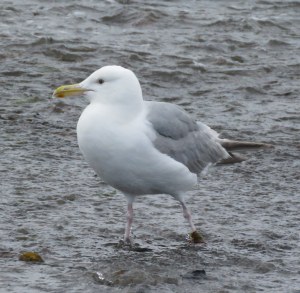

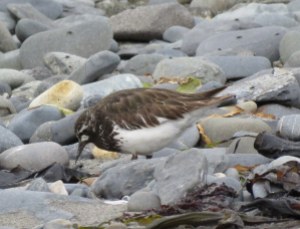




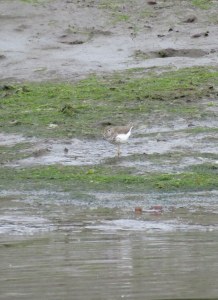


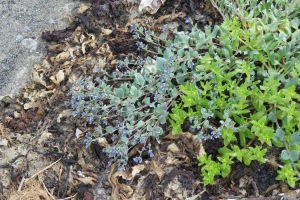


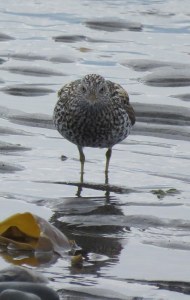


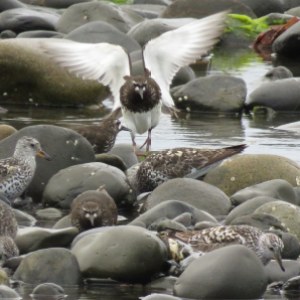

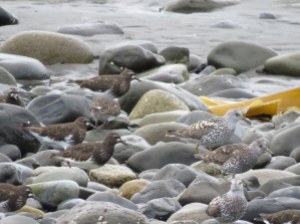

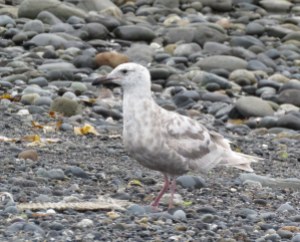
Leave a Reply